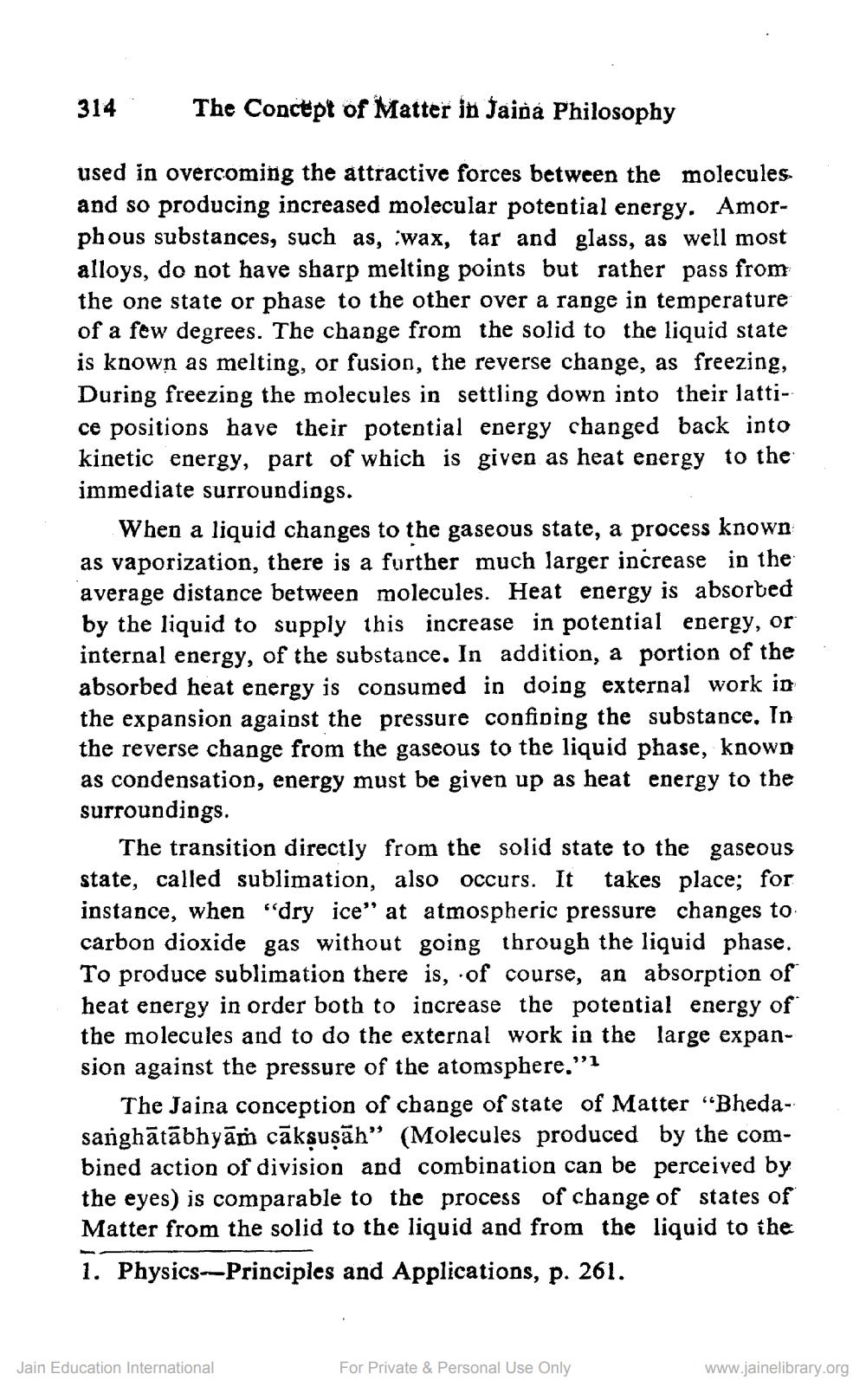________________
314"
The Concept of Matter in Jaina Philosophy
used in overcoming the attractive forces between the molecules and so producing increased molecular potential energy. Amorphous substances, such as, wax, tar and glass, as well most alloys, do not have sharp melting points but rather pass from the one state or phase to the other over a range in temperature of a few degrees. The change from the solid to the liquid state is known as melting, or fusion, the reverse change, as freezing, During freezing the molecules in settling down into their lattice positions have their potential energy changed back into kinetic energy, part of which is given as heat energy to the immediate surroundings.
When a liquid changes to the gaseous state, a process known as vaporization, there is a further much larger increase in the average distance between molecules. Heat energy is absorbed by the liquid to supply this increase in potential energy, or internal energy, of the substance. In addition, a portion of the absorbed heat energy is consumed in doing external work in the expansion against the pressure confining the substance. In the reverse change from the gaseous to the liquid phase, known as condensation, energy must be given up as heat energy to the surroundings.
The transition directly from the solid state to the gaseous state, called sublimation, also occurs. It takes place; for instance, when "dry ice" at atmospheric pressure changes to carbon dioxide gas without going through the liquid phase. To produce sublimation there is, of course, an absorption of heat energy in order both to increase the potential energy of the molecules and to do the external work in the large expansion against the pressure of the atomsphere."?
The Jaina conception of change of state of Matter “Bhedasanghātābhyām cāksuşāh” (Molecules produced by the combined action of division and combination can be perceived by the eyes) is comparable to the process of change of states of Matter from the solid to the liquid and from the liquid to the 1. Physics--Principles and Applications, p. 261.
Jain Education International
For Private & Personal Use Only
www.jainelibrary.org




